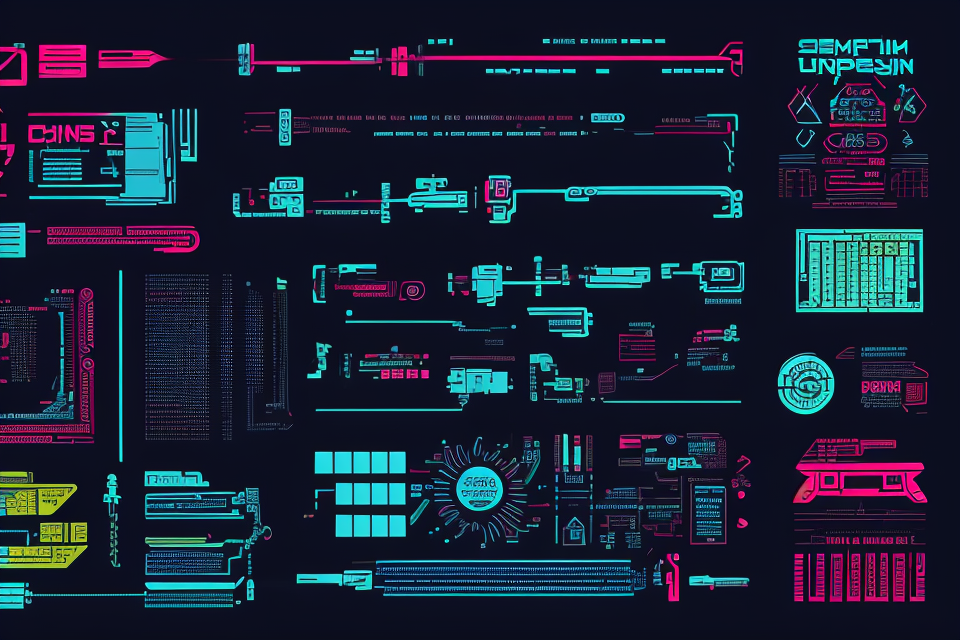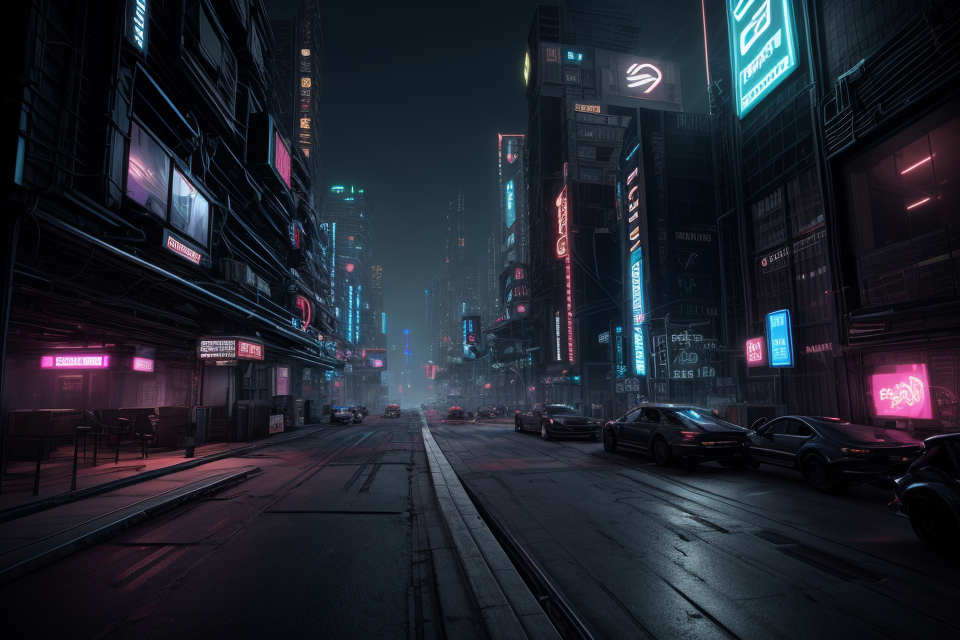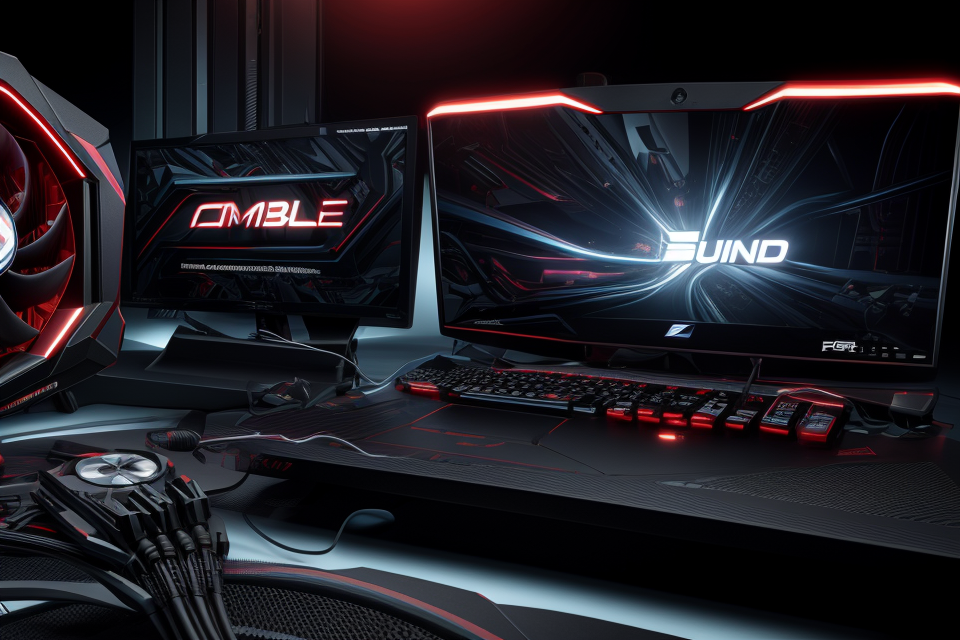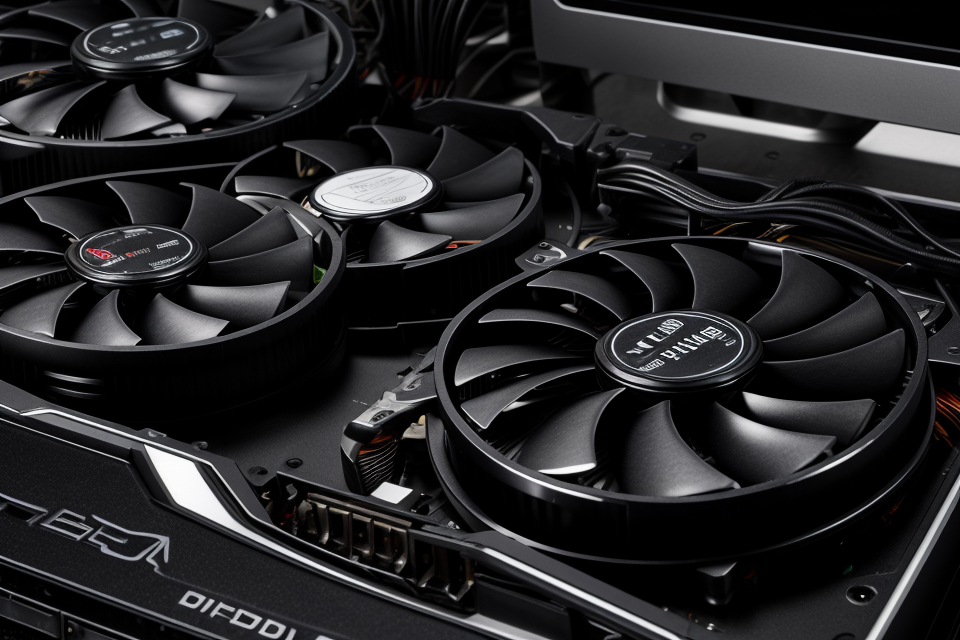
Is your graphics card acting up? Is it displaying strange colors or not functioning at all? It could be time to run some diagnostics to identify the issue. In this article, we will guide you through the process of diagnosing and fixing common graphics card issues. With just a few simple steps, you can get your graphics card back to running smoothly in no time. So, let’s dive in and discover how to diagnose and fix common graphics card issues.
To diagnose and fix common graphics card issues, first, check if the graphics card is properly seated in its slot and if all connections are secure. If the issue persists, try updating the graphics card driver and graphics card software. If the problem still exists, check the graphics card temperature and overclocking settings. If the issue is still not resolved, it may be a hardware failure and the graphics card may need to be replaced. It is also recommended to run a diagnostic test on the graphics card to identify any potential issues.
Identifying Common Graphics Card Issues
Graphical Artifacts
-
Stuttering or Freezing
Stuttering or freezing can occur when the graphics card is overwhelmed, causing the frame rate to drop. This can lead to a jerky, stuttering video output and a laggy gaming experience.
-
Texture Loading Issues
Texture loading issues can occur when the graphics card is unable to load textures quickly enough, resulting in a delay in the rendering process. This can manifest as a laggy or slow-motion effect in the game.
-
Frame Rate Drops
Frame rate drops can occur when the graphics card is unable to maintain a consistent frame rate, leading to a choppy, laggy gaming experience. This can be caused by a variety of factors, including overheating, insufficient memory, or outdated drivers.
Physical Damage or Malfunction
Physical damage or malfunction is one of the most common issues that can affect a graphics card. It is essential to identify this issue early on to prevent further damage to the card and ensure optimal performance.
- GPU Warming Up or Overheating
- One of the most common issues that can cause physical damage to a graphics card is overheating. When a graphics card gets too hot, it can cause the GPU to malfunction, leading to system crashes, blue screens, and other issues. To prevent overheating, ensure that your graphics card is in a well-ventilated area, and there is enough airflow around it. You can also use software tools to monitor the temperature of your graphics card and adjust the fan speed accordingly.
- GPU Bugs or Malware
- Bugs or malware can also cause physical damage to a graphics card. If your graphics card is infected with malware, it can cause the GPU to malfunction, leading to system crashes, blue screens, and other issues. To prevent malware infections, ensure that your system is protected with up-to-date antivirus software, and avoid downloading files from untrusted sources.
- Rust or Dust Buildup
- Rust or dust buildup can also cause physical damage to a graphics card. When dust and debris accumulate on the graphics card, it can clog the fans, preventing airflow and causing the card to overheat. To prevent rust or dust buildup, ensure that your graphics card is in a clean and dust-free environment, and regularly clean the fans with a can of compressed air.
Incompatibility Issues
Incompatibility issues can arise when there is a conflict between the graphics card and other components in the system. These conflicts can manifest in the form of display errors, system crashes, or slow performance. To identify and fix incompatibility issues, it is important to follow these steps:
- Update your graphics card drivers: Outdated drivers can cause conflicts with other system components. It is important to keep your graphics card drivers up to date to ensure compatibility.
- Check for operating system compatibility: In some cases, using an operating system that is not compatible with your graphics card can cause issues. Ensure that you are using an operating system that is compatible with your graphics card.
- Identify and remove conflicting software: Some software applications can conflict with your graphics card, causing issues. Identify any conflicting software and remove it from your system.
Diagnostic Tools for Graphics Card Issues
Built-in Diagnostic Tools
Windows Device Manager
The Windows Device Manager is a built-in diagnostic tool that provides information about the hardware devices connected to your computer. To access the Device Manager, right-click on the Start button and select “Device Manager.” In the Device Manager, look for the “Display adapters” section, which lists all the graphics cards installed on your computer.
To diagnose graphics card issues, look for any error messages or warning symbols next to the graphics card’s name. If you see any issues, try updating the graphics card driver or reinstalling the graphics card.
DirectX Diagnostic Tool
The DirectX Diagnostic Tool is a built-in diagnostic tool that tests the DirectX graphics library on your computer. To access the DirectX Diagnostic Tool, open the Start menu and type “dxdiag” in the search box. Once the DirectX Diagnostic Tool opens, click on the “Display” tab and then click on the “Test” button to run the test.
The DirectX Diagnostic Tool will then run a series of tests to check the graphics card’s functionality. If any issues are found, the tool will provide information on how to fix them. The tool also provides information on the graphics card’s manufacturer, model, and driver version.
Third-Party Diagnostic Tools
GPU-Z
GPU-Z is a free, lightweight diagnostic tool that provides detailed information about your graphics card, including its model, BIOS version, and driver version. It also displays the clock speed, memory usage, and temperature of the graphics card. This tool is particularly useful for monitoring the performance of your graphics card and identifying potential issues.
MSI Afterburner
MSI Afterburner is a popular overclocking utility that allows you to adjust the clock speed and voltage of your graphics card. It also provides real-time monitoring of your graphics card’s performance, including temperature, fan speed, and power consumption. This tool can help you identify potential issues with your graphics card and optimize its performance.
AIDA64 Extreme
AIDA64 Extreme is a comprehensive system diagnostic tool that provides detailed information about all the components of your computer, including your graphics card. It can display information such as the graphics card’s manufacturer, model, and driver version, as well as its memory size and utilization. This tool can help you identify potential issues with your graphics card and ensure that it is functioning properly.
In addition to these third-party diagnostic tools, it is also important to regularly update your graphics card drivers to ensure optimal performance and stability. Manufacturers such as NVIDIA and AMD provide regular updates to their graphics card drivers, which can be downloaded from their websites. By regularly updating your graphics card drivers, you can avoid potential issues and ensure that your graphics card is functioning at its best.
Benchmarking Tools
Benchmarking tools are a great way to diagnose common graphics card issues. These tools allow you to test the performance of your graphics card and compare it to other similar cards. This can help you identify any issues that may be affecting your card’s performance.
Here are some of the most popular benchmarking tools for graphics cards:
- 3DMark: This is a widely used benchmarking tool that can test the performance of your graphics card in both gaming and non-gaming scenarios. It includes a range of tests that can measure the card’s performance in different types of workloads, such as gaming, multimedia, and GPU-accelerated workloads.
- Unigine Heaven and Superposition: These are two more popular benchmarking tools that can test the performance of your graphics card in 3D rendering and gaming scenarios. Unigine Heaven is designed to test the card’s performance in a synthetic workload, while Superposition is designed to test the card’s performance in a more realistic gaming scenario.
Overall, benchmarking tools can be a very useful diagnostic tool for identifying common graphics card issues. By running these tests, you can get a better understanding of your card’s performance and identify any potential issues that may be affecting its performance.
Fixing Common Graphics Card Issues
Addressing Overheating Issues
-
Cleaning Dust and Rust
-
Updating Drivers
-
Installing Better Cooling Solutions
When it comes to addressing overheating issues with your graphics card, there are several steps you can take to ensure that your card is running smoothly and efficiently. The first step is to clean any dust or rust that may have accumulated on the card, as this can impede airflow and cause the card to overheat. This can be done by using a can of compressed air or a soft brush to gently remove any debris from the card.
Another step you can take is to update your graphics card drivers. Outdated drivers can cause compatibility issues and may not be optimized for the latest games and software. By updating your drivers, you can ensure that your card is running at its best and that any potential issues are addressed.
If your graphics card is still experiencing overheating issues, you may need to install better cooling solutions. This can include installing additional fans or a liquid cooling system to help dissipate heat and keep your card running at optimal temperatures. It’s important to note that when installing any new cooling solutions, you should always follow the manufacturer’s instructions to avoid any damage to your card.
By taking these steps to address overheating issues, you can ensure that your graphics card is running smoothly and efficiently, and that you are able to enjoy the latest games and software without any issues.
Addressing Incompatibility Issues
- Common graphics card issues often arise due to incompatibility between the graphics card and other hardware components or software. To address these issues, follow these steps:
- Updating Drivers: One of the primary causes of incompatibility issues is outdated drivers. Ensure that your graphics card drivers are up-to-date by visiting the manufacturer’s website and downloading the latest drivers for your specific graphics card model. Installing the latest drivers can resolve issues such as graphical glitches, display errors, and performance problems.
- Checking Operating System Compatibility: In some cases, incompatibility issues may arise due to incompatible operating systems. Ensure that you are using an operating system that is compatible with your graphics card. Manufacturers typically provide a list of compatible operating systems on their website, so be sure to check before installing a new operating system.
- Disabling Conflicting Software: Certain software applications may conflict with your graphics card, causing issues such as display errors or crashes. Identify any conflicting software and disable them temporarily to see if the issue resolves. You may need to update or remove the conflicting software permanently to prevent further issues.
In conclusion, addressing incompatibility issues is a crucial step in fixing common graphics card issues. By updating drivers, checking operating system compatibility, and disabling conflicting software, you can resolve many of the issues that arise due to incompatibility.
Addressing Physical Damage or Malfunction
- Identifying the source of the issue
- Graphics cards are susceptible to physical damage due to overheating, dust accumulation, or other external factors. Physical damage can manifest as flickering screens, lines appearing on the screen, or the graphics card simply not functioning.
- Conducting a visual inspection
- To begin addressing physical damage or malfunction, start by conducting a visual inspection of the graphics card. Check for any visible signs of damage, such as loose components, bulging capacitors, or bent pins. It’s important to take care when handling the graphics card to avoid further damage.
- Checking for loose connections
- Loose connections can also cause graphics card issues. Check all cables and connections to ensure they are securely fastened. Gently push the connection back into place if it seems loose.
- Checking for overheating
- Overheating is a common cause of graphics card failure. Check the graphics card’s temperature using software such as MSI Afterburner or AIDA64 Extreme. If the temperature is too high, try cleaning the dust from the graphics card or upgrading the cooling system.
- Cleaning the graphics card
- Dust accumulation can cause the graphics card to overheat and malfunction. Use compressed air or a can of dust remover to blow out any dust that has accumulated on the graphics card. Be sure to unplug the computer and remove the side panel to access the graphics card.
- Replacing damaged components
- If any components on the graphics card are damaged, they may need to be replaced. Consult the manufacturer’s instructions or a repair guide to replace any damaged components. It may be necessary to purchase a replacement graphics card if the damage is too severe.
By following these steps, you can address physical damage or malfunction on your graphics card and potentially save money on costly repairs or replacements.
Preventing Future Graphics Card Issues
Proper Maintenance
Ensuring the proper maintenance of your graphics card is essential to prevent future issues. Regular cleaning, keeping your system up-to-date, and avoiding overclocking are all key aspects of proper maintenance.
Regular Cleaning
Regular cleaning of your graphics card is important to prevent dust and debris from accumulating on the card’s surface. This can cause overheating and other issues. To clean your graphics card, unplug it from the power source and use a soft, dry cloth to gently wipe away any dust or debris. Avoid using harsh chemicals or alcohol-based cleaners, as these can damage the card.
Keeping System Up-to-Date
Keeping your system up-to-date is crucial for preventing future graphics card issues. Make sure to install any available driver updates and software patches, as these can help improve performance and stability. Additionally, updating your operating system can also help prevent issues with your graphics card.
Avoiding Overclocking
Overclocking, or increasing the clock speed of your graphics card beyond its intended specifications, can cause serious damage to the card and lead to future issues. While overclocking can temporarily improve performance, it can also cause the card to overheat, malfunction, or even fail completely. It is recommended to avoid overclocking and instead stick to the manufacturer’s intended specifications for your graphics card.
Choosing Quality Hardware and Software
Investing in Quality GPUs
When it comes to investing in quality hardware, one of the most crucial components for any gaming setup is the graphics card. High-quality graphics cards can provide a significant boost in performance, ensuring that you get the most out of your gaming experience. To ensure that you are investing in a quality graphics card, it is important to consider the brand, the model, and the specifications. Some of the most trusted brands in the market include NVIDIA and AMD, and it is important to research and compare different models to find the one that best suits your needs.
Using Trusted Brands
Another important aspect of choosing quality hardware is selecting trusted brands. While there are many brands on the market, not all of them are created equal. Some brands have a reputation for producing high-quality hardware, while others may be known for producing lower-quality products. When selecting hardware, it is important to choose brands that have a proven track record of producing reliable and high-performance products.
Regularly Updating Software
Finally, it is important to regularly update your software to ensure that your hardware is functioning at its best. This includes updating your operating system, as well as any software that you use to run your graphics card. By keeping your software up to date, you can help prevent issues and ensure that your graphics card is performing optimally.
FAQs
1. What is a graphics card diagnostic tool?
A graphics card diagnostic tool is a software program that can detect and diagnose issues with a graphics card. These tools can provide information about the card’s performance, detect any errors or malfunctions, and provide suggestions for troubleshooting.
2. How do I run a diagnostic test on my graphics card?
To run a diagnostic test on your graphics card, you will need to download and install a graphics card diagnostic tool. Once the tool is installed, you can run a diagnostic test by following the instructions provided by the tool. The tool will detect any issues with the graphics card and provide information on how to fix them.
3. What kind of issues can a graphics card diagnostic tool detect?
A graphics card diagnostic tool can detect a wide range of issues, including errors in the card’s drivers, hardware malfunctions, and performance issues. The tool can also detect overheating and other issues that may be affecting the card’s performance.
4. How can I fix common graphics card issues?
There are several steps you can take to fix common graphics card issues. First, you can try updating the card’s drivers to the latest version. If this does not fix the issue, you may need to uninstall and reinstall the drivers. If the issue persists, you may need to perform a clean boot or check for malware on your computer. If none of these steps work, you may need to contact the manufacturer for further assistance.
5. What should I do if my graphics card is overheating?
If your graphics card is overheating, you should take immediate action to prevent damage to the card. First, check the card’s cooling system to ensure that it is functioning properly. If the cooling system is not working, you may need to clean or replace it. You should also check for dust or other debris that may be blocking the card’s vents. If the problem persists, you may need to contact the manufacturer for further assistance.


